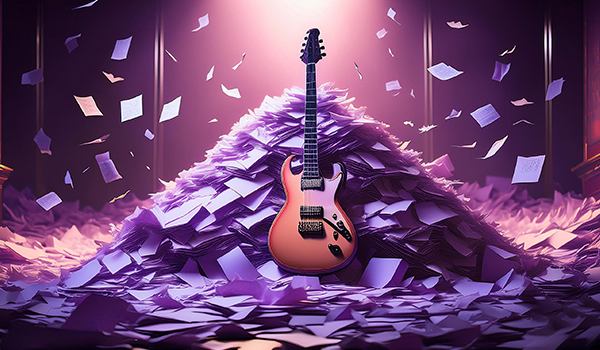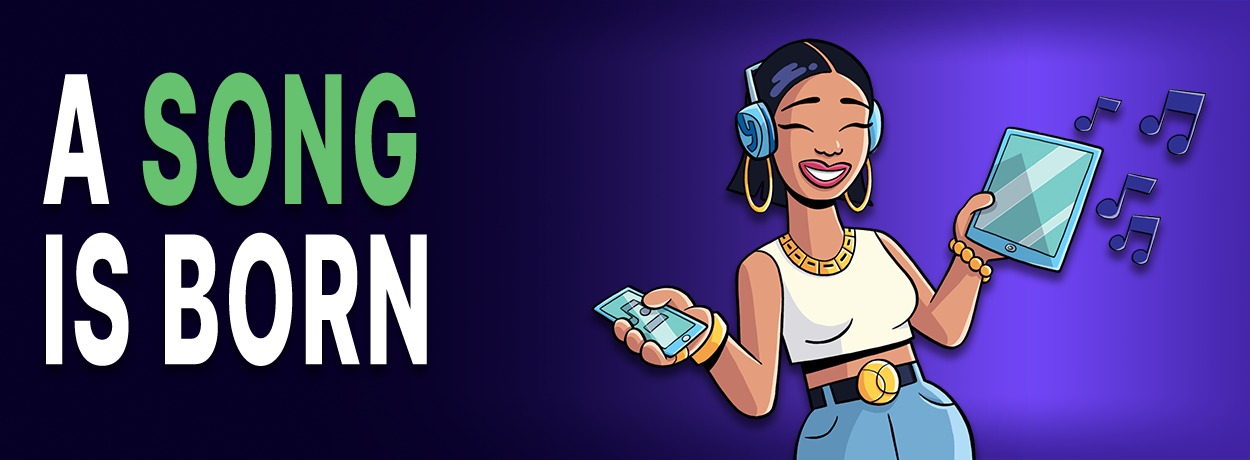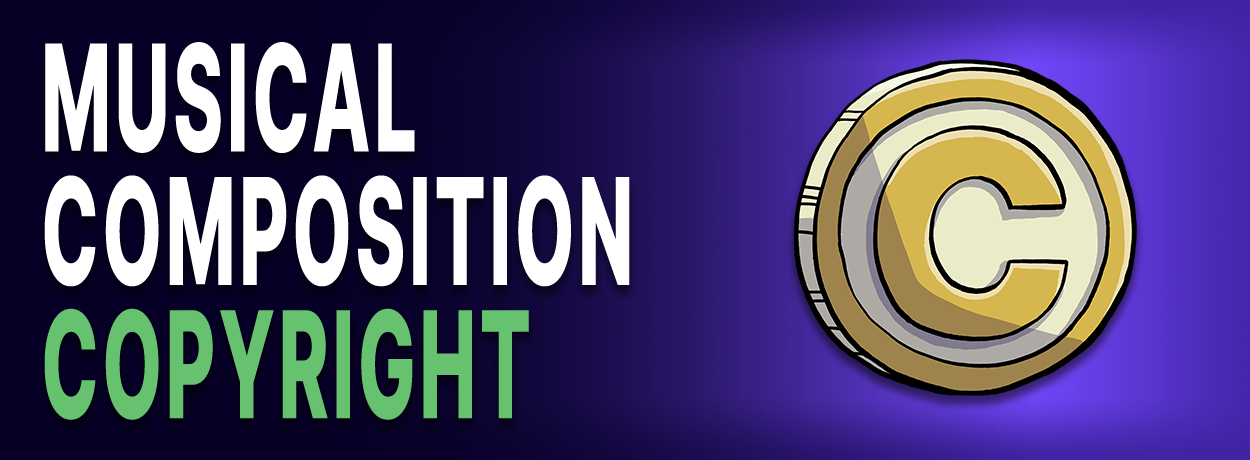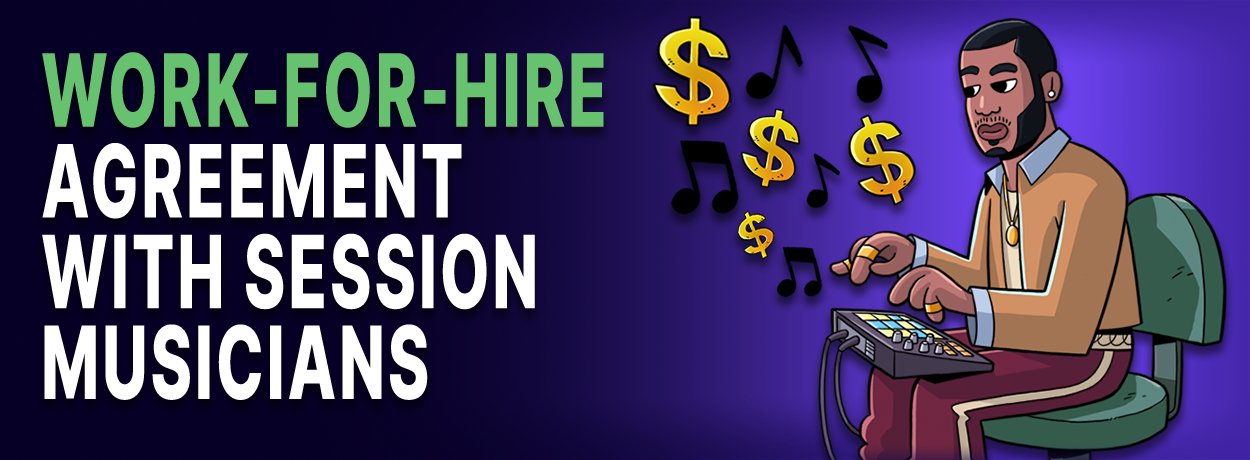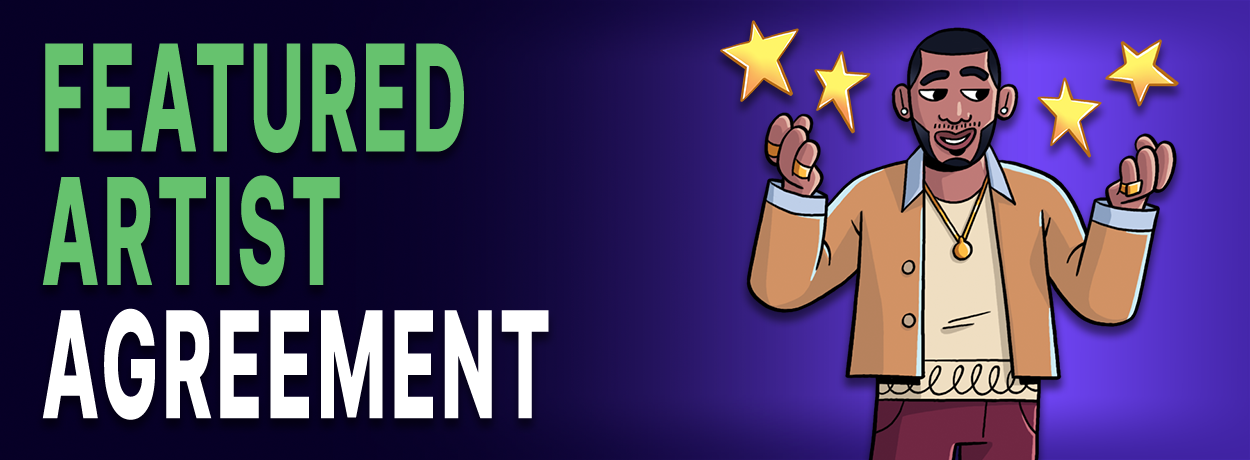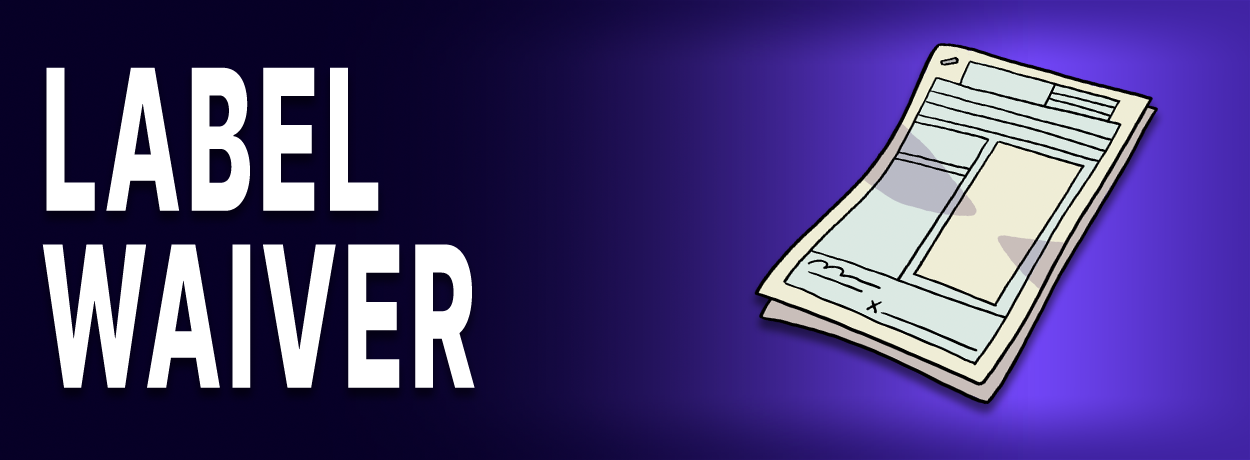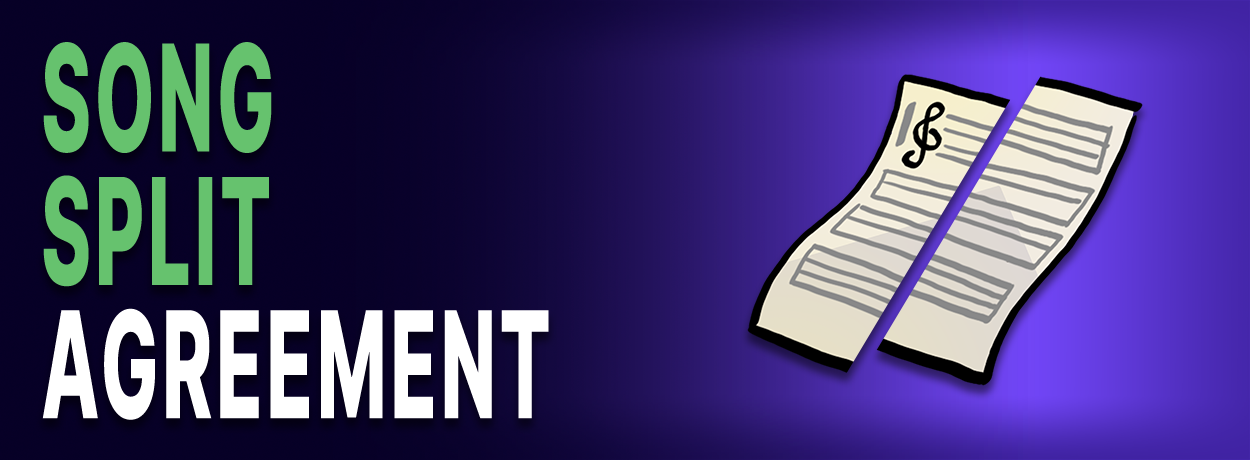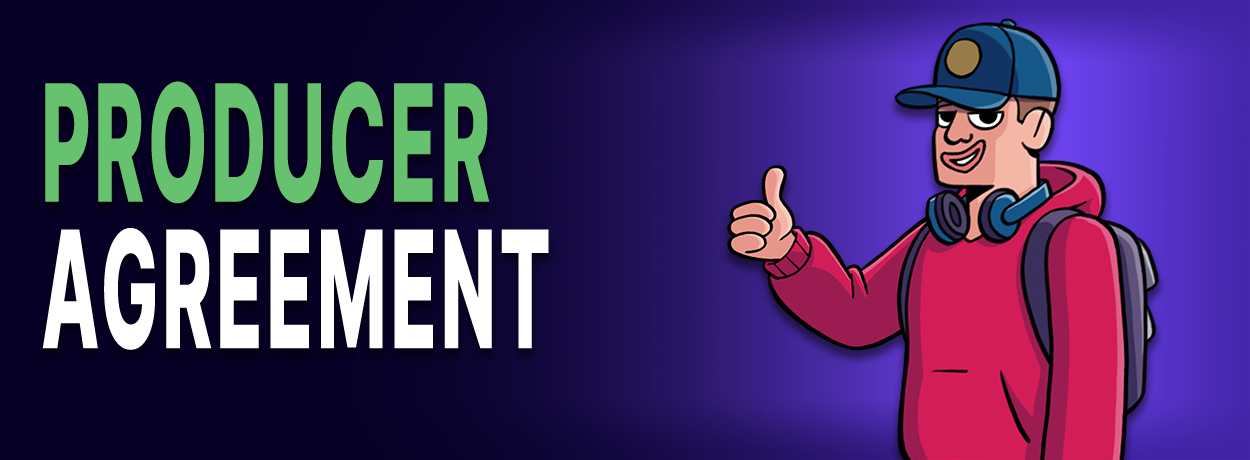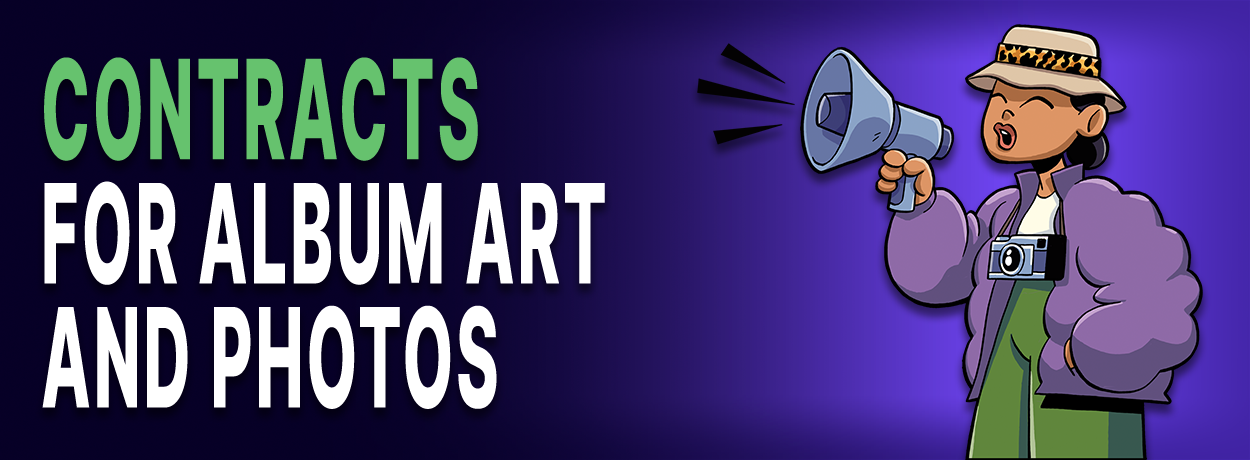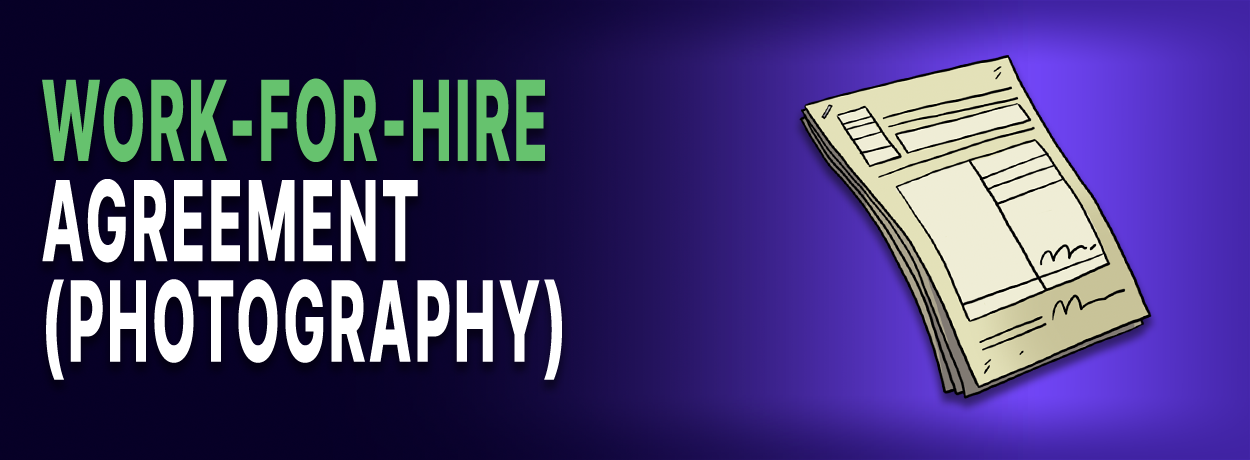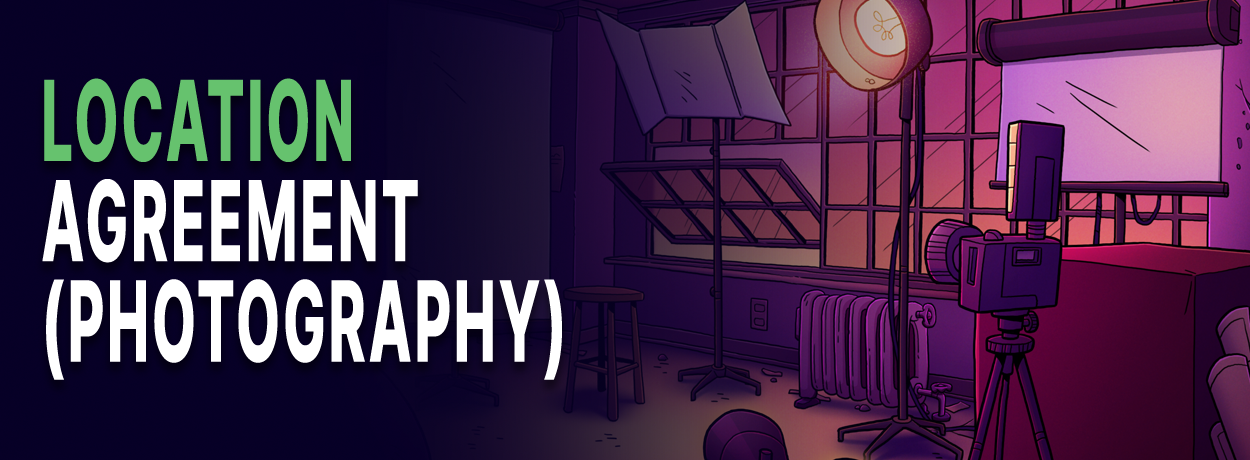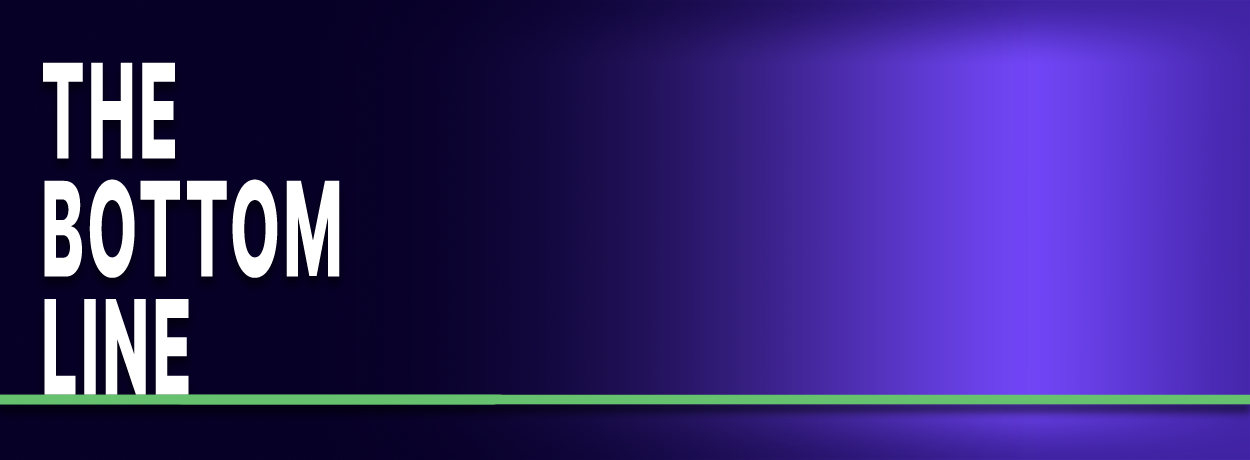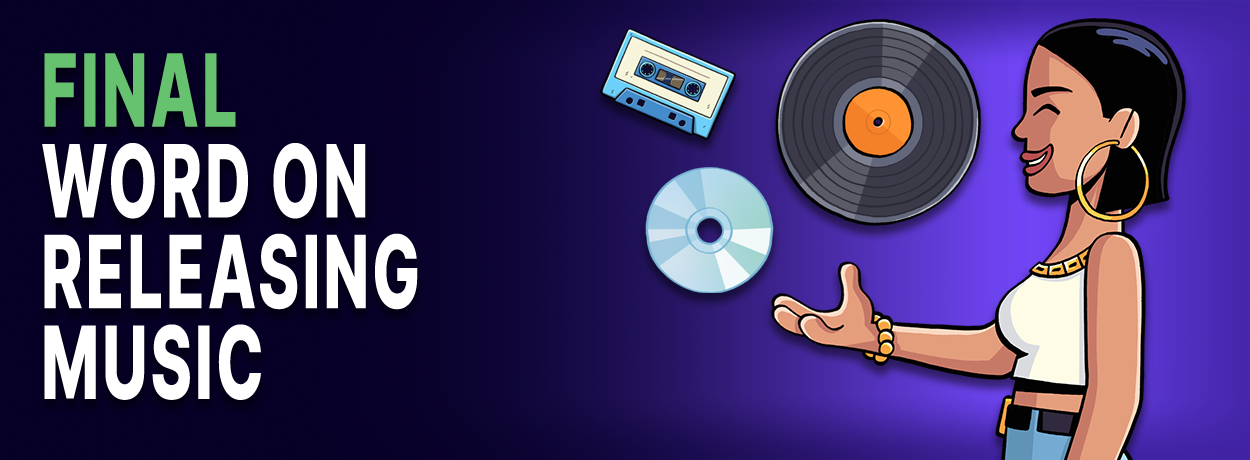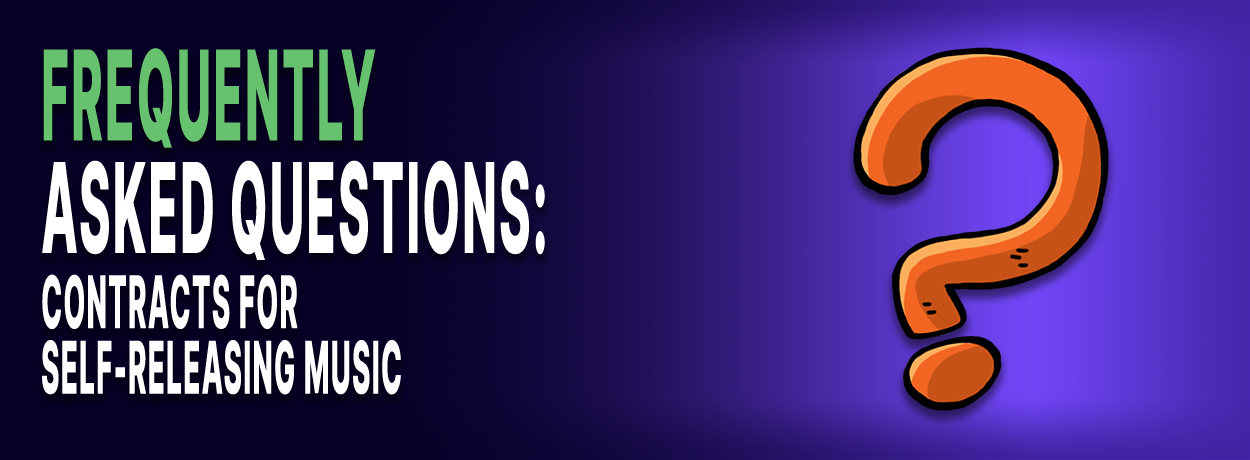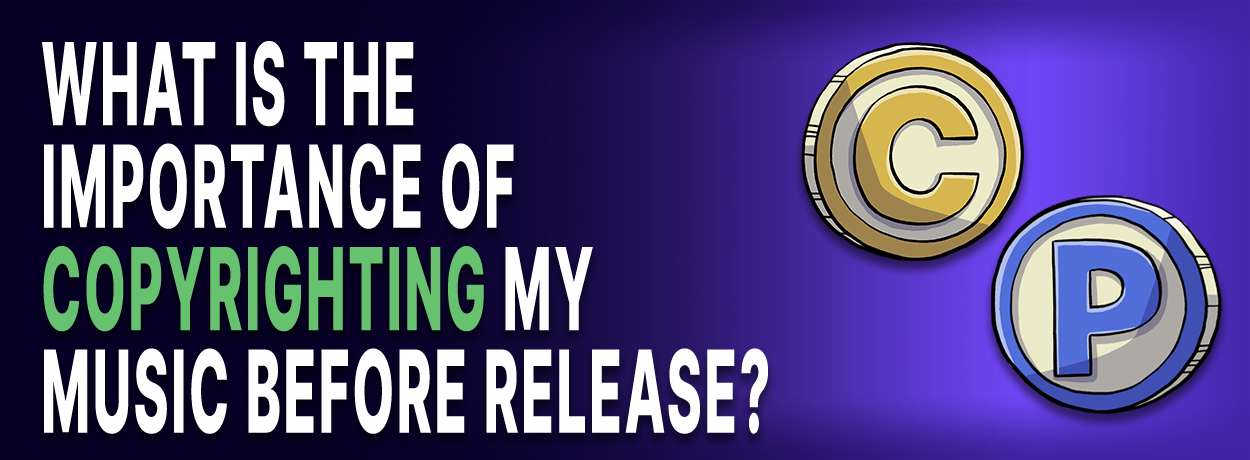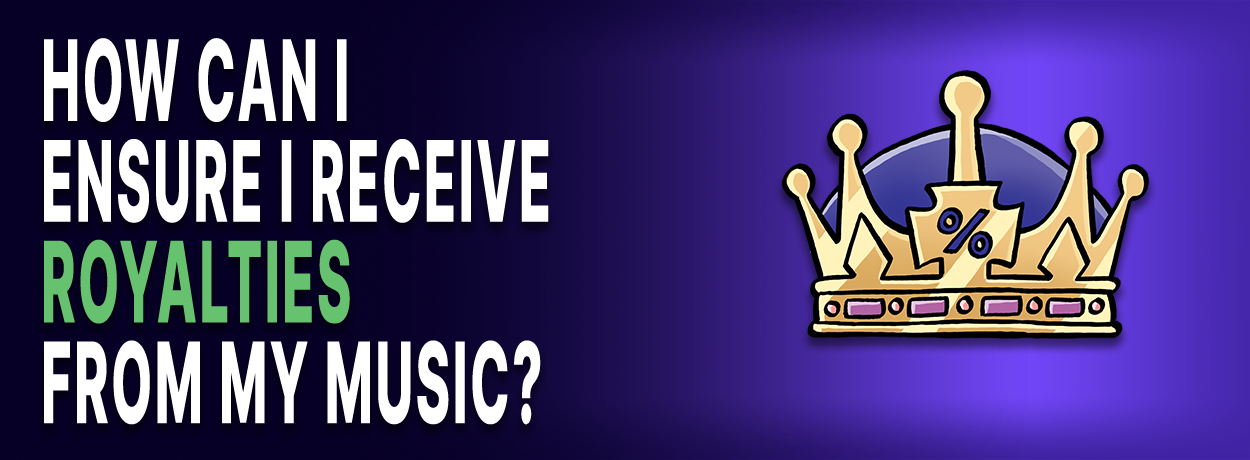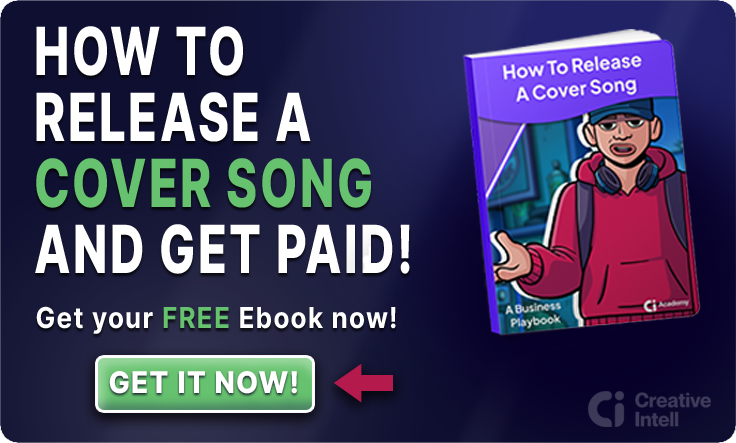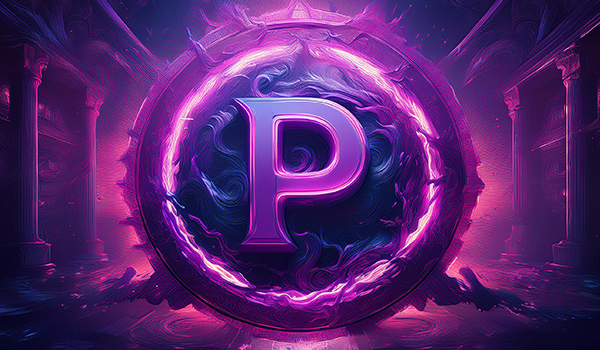Nobody pursues a music career dreaming about all the contracts they’ll be dealing with as their career progresses, but you're career is a business!
And like any business, the music industry is held together through lots of contracts.
Written agreements (interchangeably, called contracts) are needed for virtually everything action you take in the music business. Whether it's splitting up song ownership percentages with co-writers, hiring producers and session musicians, or signing a record deal.
This is a story about Cristaal, an imaginary client of mine, who’s written her first original song and now wants to record and release it on "Digital Service Providers" (DSPs) like Apple Music and Spotify.
We’ll go through all the basic agreements she might need at this stage of her career and why she’ll need them!
You might be surprised by the number and type of agreements she’ll need to protect her work and collect all the income it generates as an independent artist.
But don't fret if you don't know where or how to put these contracts together yourself.
Creative Intell members have free templates for all the following agreements at their fingertips with interactive courses and real-time support should you have questions about customizing a template for your specific purposes.
So let’s get to it!
A Song is Born
Cristaal is just getting started in the music business, at this point mostly focusing on creating new music that she loves.
She wrote the music (the melody and chord progression) and the lyrics of a song alone in her head, titled it My Best Song, and recorded it with the voice memo app on her phone. Cristaal’s song is a type of intellectual property; a musical composition.
Musical Composition Copyright
And if Cristaal’s name appeared in writing as the songwriter of this song (like in the liner notes of a vinyl album or on a streaming service like Spotify), her copyright could be credited with a “c” in a circle and might include the year she wrote it as well. It could look like this: © Cristaal 2024.
The minute Cristaal recorded My Best Song on her phone, she’d created a copyright in the musical composition. She will now need to register that copyright with the U.S Copyright Office in order to have it fully protected.
Sound Recording Copyright
When Cristaal recorded the voice memo of My Best Song, she did it “acapella” – meaning with no musical instruments.
That initial voice memo recording of her composition is also a type of intellectual property. The moment she recorded My Best Song into her phone she created a copyright in the sound recording for that recording.
Any future recordings of My Best Song will also have their own unique copyrights. So, if she records the song again for a record label, or releases a live recorded version of My Best Song someday, each of those recordings will be a separate copyright in each of those sound recordings.
For her work to be fully protected, any recordings of My Best Song that Cristaal plans to release to the public should be registered with the US Copyright Office. If Cristaal’s My Best Song recording is credited (like in the liner notes of a vinyl album or on a streaming service like Spotify), it would be credited with a “P” in a circle and it too may include the year she wrote it. It could look like this: ℗ Cristaal 2023.
Work-for-Hire Agreement with session musicians
Now let’s say Cristaal decided to make a higher quality recording of her song - something she could comfortably release to the public - by inviting her friend Cairo over to play guitar on it.
In the music business, as soon as a person starts collaborating with someone else - whether creatively or in business - there are many important things to know.
You should have written agreements with your collaborators so there are no misunderstandings over copyright ownership.
Cristaal plays her voice memo recording of My Best Song for Cairo and tells him exactly how to play the guitar part for this new recording.
At this point, Cristaal should have a conversation with Cairo about how she intends to be a recording artist, release this recording as her own, and only needs him to be a background instrumentalist on the track.
But what should Cristaal pay him? The music business has a certain way of doing business; its own “custom and practice.”
How much Cristaal pays Cairo depends on several factors, such as her popularity and his popularity, the expectation of what’s going to happen with the recording, and how much time it’s going to take for Cairo to help her out on guitar.
Crystaal is just starting out in music; same thing with Cairo. Cristaal probably doesn’t have any money to pay Cairo, but if he gets known for playing guitar on this recording, and it does well, it could help his career. Plus, they're friends and Cairo really likes the song.
Generally, when a recording artist and an instrumentalist are both starting out and it won't take them a lot of time to work on this one track, the instrumentalist will perform simply to receive the credit, the notoriety for appearing on the track.
Still, everyone needs money to pay their bills, so maybe Cristaal pays him an hourly rate for his help. That could be the same rate he gets for teaching guitar to high school kids, but it could be any other sum as well. It’s all negotiated between them.
So, if Cairo is simply acting as an instrumentalist on the recording, Cristaal needs to prepare and have Cairo sign a work-for-hire agreement with her.
This agreement will say that Cristaal owns the recording and Cairo is not entitled to any money from the use (also known as the “exploitation”) of that recording other than the amount stated in their work-for-hire agreement.
If Cristaal neglects to have Cairo sign a work-for-hire agreement, Cairo could potentially claim that he co-owns the recording. Cristaal needs Cairo to assign all rights to his performance over to her in this agreement - before he's played a single note.
Featured Artist Agreement
But let’s go with a different scenario now. Let’s say that Cairo is a major league guitarist – a true rock star - and Cristaal not only wants him to record the guitar part of her song, but she also wants his name closely associated with the recording. She wants the artist credit to read:
“Cristaal featuring Cairo"
Cairo’s happy to help a developing artist out so he agrees on the basis that they’re both going to earn money from the exploitation of the recording.
He wants to split the profits from the recording on a 50/50 basis for being featured on it. In this scenario, instead of a work-for-hire agreement, Cristaal and Cairo need a featured artist agreement between them, also known as a side artist agreement.
The featured artist agreement is going to cover the economics of their collaboration and more. It will answer questions like:
-
which artist is collecting the money,
-
how expenses like recording costs and marketing expenses are taken into account
-
are their limitations on how the recording can be exploited without obtaining the other artist’s approval
-
How each person will be credited
-
and more
Label Waiver
And if Cairo is signed to a record deal while Cristaal is releasing the recording, she’ll also need to obtain the right to release the track from his record label, what's called a label waiver.
The label waiver can either be an email confirmation from Cairo’s label, or a simple agreement attached to the side artist agreement (that the label signs) acknowledging that Cristaal will be releasing the track.
Now let’s say that Cairo is going to write his guitar part and wants to be a co-writer of the song. He wants “publishing,” as they say.
Cristaal and Cairo need to work this out, because if Cairo writes a portion of the song, they will have created a “derivative work”, a new version of the song.
It can have the same title; but if Cristaal is going to release her original version of My Best Song in the future, they should have a new title for this new version because it will be easier to keep track of it in the future. So, they title the new version My Better Song.
If Cairo wrote his guitar part, by default he’s considered to be an equal co-writer of My Better Song - unless he and Cristaal agree to a different ownership split for it.
But since owning half the song for his guitar part isn’t really his intention, he and Cristaal need to have a conversation and agree upon how much he should own of the My Better Song composition.
Cristaal and Cairo can put the terms of the ownership of this new song into a work-for-hire agreement for the recording if Cairo is just acting as a session musician, or in the featured artist agreement if he’s being featured on the recording.
Song Split Agreement
But if they want a separate agreement just to cover their ownership of My Better Song as a musical composition, they’ll need a co-administration agreement, commonly called a song split agreement or split sheet.
Besides spelling out the ownership percentage of each songwriter, the terms of the song split agreement (or the song split language within a work-for-hire or featured artist agreement) will state that each songwriter administers their own share of the ownership of the song - enabling each songwriter to collect and administer their rights to that song.
That agreement could include more sophisticated provisions, such as a restriction that prohibits Cairo from allowing anyone to hear the recording until Cristaal releases it.
Producer Agreement
Once Cristaal and Cairo start working on My Better Song, they decided that the recording would sound better if Cristaal hired a producer to produce the track. So, Cristaal calls her producer friend, Byte, and discusses what she’s musically trying to achieve with the recording.
Byte invites Cristaal and Cairo over to his studio to discuss his vision for the new recording. They all agree his vision is brilliant and Byte should be the producer.
The recording artist hires the music producer. So, if Cristaal is the only artist (and Cairo is just a background musician), only Cristaal will decide whether to hire Byte and will have to work out the deal terms with Byte.
If Cairo was featured on the track, in all likelihood he would want the right to approve hiring Byte as the producer and could be responsible for sharing in the cost of hiring him and sharing earnings from the song.
Either way, Cristaal is the one hiring Byte, so she needs to negotiate the terms of a producer agreement with him. The producer agreement covers such issues as:
-
Byte’s producer compensation,
-
how that compensation is calculated,
-
what credit Byte will receive for his production work.
-
and more
If Byte also ends up co-writing the new recording, the producer agreement will also contain terms and conditions from the song split agreement as well as mechanical license provisions.
So to recap, when recording a song, the core agreements used can include:
-
featured artist agreement (if “featured guests" are on the recording)
-
label waiver (if a featured guest artist is signed to a label)
Cristaal, Cairo and Byte were able finalize all of their agreements. The final version of My Better Song turned out to be written by all three of them and will be released as “Cristaal - featuring Cairo. Produced by Byte."
As everything worked out, Cristaal and Cairo signed the featured artist agreement together, and both signed the producer agreement with Byte with their song split terms included in that agreement. Cairo isn’t currently signed to a record label, so there was no label waiver to obtain.
All the agreements needed to document the creation of My Better Song (both the recording and composition) were completed. Now Cristaal wants to get it released.
Contracts for Album Art and Photos
In order to set the release up properly, Cristaal knows she needs great photos for her artist profile page and wants to create a cover image for the release of her new song, her single.
So she decides to call her friend Vickie Lee, a photographer, to find out if she could take some solo photos of her alone, and some other photos alongside Cairo and Byte.
Vickie was nearby when Cristaal called so she stopped by to talk with her. They decided it would be best if they shot some photos indoors at Byte’s studio, and others outdoors in the neighbourhood park.
Vickie is building her name as a photographer and has started getting work from local businesses that need professional photography.
She would normally get $1,500 for the work, but since Cristaal is her friend, Vickie specifically says she’ll do it for $500 so long as she also receives a royalty from the sale of any merchandise containing her photos.
Vickie also agrees that she can spend half a day shooting photos in the two locations with Cristaal alone and together with Cairo and Byte for that $500 fee.
She’ll post all of the photos for Cristaal to review and Cristaal will need to select 10 photos that she likes; Vickie will do some touchups if needed.
Cristaal agrees to pay her 5% of her profits from the use of her photos on merchandise, but in no event will the total royalties that she pays her exceed $2,500.
Vickie has the potential to make $3,000; $500 from the upfront fee paid plus the additional $2,500 in royalties (almost twice the amount she’d otherwise receive if she was paid her normal rate in full upfront).
Work-for-Hire Agreement (Photography)
Together they make a deal for a photography work-for-hire agreement; another negotiation.
But wait, Cairo thinks about it: does the producer agreement with Byte and the side artist agreement with Cairo contain provisions about photography?
It turns out that both agreements have name and likeness provisions that grant Cristaal the right to use photographs of them provided that they have an approval over those photographs.
Each agreement contains a simple obligation that they’ll participate in photography sessions, subject to any of their prior professional commitments (that is, if they aren’t tied up doing something else). Cristaal calls Cairo and Byte; yes, they're both free on the date she selected to shoot the photos with Vickie.
Location Agreement (Photography)
On the day of the shoot, everything went great and Cristaal quickly received the photos from Vickie.
But there’s an issue with her favorite photo of the batch. It was taken at her family’s restaurant that has another photo in the background hanging on the wall. That photo was taken by her cousin years ago.
It made Cristaal think: did she need an agreement with her family for the use of the restaurant? Did she also need an agreement with her cousin for the use of the photo that appears in the background?
Cristaal decided to be prudent and got a location agreement signed with her family for the use of the restaurant as a photography location, and then secured a photo license from her cousin to use her photo within the new photo.
At this point, Cristaal had all the initial paperwork for her recording in place.
Now she’ll need to start making arrangements to get her track distributed – we'll take you down that rabbit hole of knowledge in a future post.
The Bottom Line on Releasing Music
The point here is that each one of these agreements is critical to protecting Cristaal’s work – and by extension, the money she earns.
Being present on streaming platforms and getting playlisted can make all the difference in an artist’s visibility and chances of getting their music heard by new audiences.
If My Better Song blows up and starts generating large amounts of money, she’ll be able to sleep at night knowing all her legal bases are covered and that no creative collaborator will be able to (successfully) sue her for copyright infringement or claim partial ownership of My Better Song.
And if Cristaal chooses to license My Better Song to a record label, she’ll own all the rights to her recording and be in a position to do that deal.
Final Word on Releasing Music
Protect Your Music: Essential Contracts from Creative Intell
When learning how to release music independently, having the right contracts in place is key towards protect your legal and financial interests. Creative Intell offers top-tier agreement templates that are essential for artists navigating the complexities of the music industry.
These templates are drafted by seasoned music lawyers with decades of real music business experience, ensuring that you have reliable and comprehensive legal documents at your disposal.
The contracts and legal waivers available through Creative Intell cover a wide range of music business needs, and are designed to safeguard both your creative work and financial interests.
Moreover, when you download a contract template from Creative Intell, you gain access to an easy-to-follow course that explains the contract in detail. This educational component is invaluable for understanding the details of each agreement.
Additionally, Creative Intell provides real-time guidance through their community, where you can ask questions and receive advice from top lawyers and industry professionals.
This supportive environment is ideal for anyone looking to dominate the music industry while ensuring their rights are protected.
The CI Community is a welcoming space where artists and professionals collaborate and share insights, making it an excellent resource for non-lawyers and aspiring music industry leaders.
FAQ Section: Contracts for Self-Releasing Music
When independent artists are preparing to release their music, understanding the necessary contracts is important. Below are some frequently asked questions about the contracts needed for self-releasing music.
What is the best way to release music?
The optimal way to release music is by using a music distributor. Leveraging a distributor simplifies the process of getting your music onto major streaming services and provides some guidance on additional channels that should be addressed. This enables your music to reach a wider audience across all platforms.
Why is an electronic press kit important?
A: An Electronic Press Kit (EPK) is a key tool as it serves as a comprehensive overview for industry professionals, functioning much like an artist’s resume. A well-organized and visually appealing EPK should be updated regularly to include new releases and ensure easy access to relevant information for journalists and bloggers.
What should a music contract include?
A music contract should include key elements such as the scope of work, payment terms, copyright ownership, and any royalties or revenue sharing agreements. This ensures that all parties involved understand their rights and obligations, which is crucial for a successful music release strategy.
How do I release my own music?
Releasing your own music involves several steps, including creating a music release strategy, selecting a music distributor, and writing a music press release to gain media coverage. Regular releases help maintain audience engagement and relevance in the music industry.
What is a work-for-hire agreement for music artists?
A work-for-hire agreement is a contract where a musician or producer agrees to create a piece of music for someone else, with the understanding that the person hiring them will own the copyright to the work. This is essential for artists who want to ensure they have full rights to their music releases.
How can I release my music with no money?
Releasing music with no money can be challenging, but independent artists can leverage free or low cost digital platforms, social media for promotion, and collaborate with other artists to share resources. Having a well-defined release strategy is important to maximize visibility and engagement without a large budget.
What is a music release strategy?
A music release strategy is a plan that outlines how an artist will release their music, including setting a release date, choosing distribution channels, and planning promotional activities such as music videos. This strategy is crucial for maintaining audience engagement and achieving success in the music industry.
Can artists release music without a record label?
Yes, artists can release music without a record label by self-releasing. This involves managing all aspects of the release process, from production to promotion. Utilizing music distributors and creating a comprehensive release strategy can help independent artists make a mark in the industry without a label.
What is the importance of copyrighting my music before release?
You automatically have a copyright as soon as your music is fixed in a tangible medium. However, registering your copyrights with the US Copyright Office music ensures legal protection against unauthorized use of your music. It allows you to prove ownership and take legal action if someone uses your work without permission.
Should I trademark my artist name?
Trademarking your artist name can prevent others from using it and protect your brand. While not mandatory, it is a good step once you begin to build a significant presence in the music industry.
What contracts are necessary for digital distribution?
You will need a distribution agreement with a digital distributor like TuneCore, DistroKid, or CD Baby. This contract outlines how your music will be distributed to streaming platforms and stores.
How can I ensure I receive royalties from my music?
Register with a Performance Rights Organization (PRO) like BMI, ASCAP, SESAC or Alltrack to collect royalties from public performances and broadcasts. Also, consider registering with SoundExchange for digital performance royalties.
What are the risks of releasing music without a contract?
Without a contract, you risk misunderstandings about ownership and rights, potential disputes over profits, and unauthorized use of your music. A contract helps mitigate these risks by clearly defining terms and responsibilities.
Disclaimer language:
Creative Intell is not affiliated, nor associated in any way, with any third parties referenced herein, nor their respective goods or services. Any and all third-party tradenames, trademarks, and/or service marks referenced are used for informational purposes only, and are the exclusive property of their respective trademark owners.
Tags:
Music Industry 101, Industry Agreements, Music Business 101, Understanding Producer Agreements